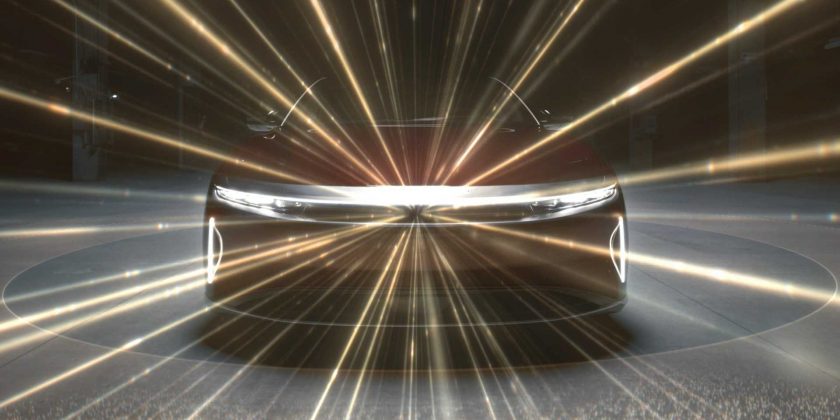Lucid Group has announced details about DreamDrive, its proprietary advanced driver assistance platform described as “the most technically sophisticated advanced driver-assistance system.”
DreamDrive has a total of 32 on-board sensors, cameras and radars, including the first automotive LIDAR in North America, as well as a multi-faceted driver-monitoring system and “lightning-quick on-board ethernet networking.” The backbone of the powerful computer network in the vehicle is the Ethernet Ring, a high-speed data network enabling four computer gateways—one at each corner of the car—to communicate with each other at gigabit speeds.
This hardware powers more than 30 features via a user-friendly interface, including collision avoidance, Highway Assist, Traffic Jam assist, and Auto Park. The most advanced iteration of Lucid’s ADAS will be marketed as DreamDrive Pro and will offer additional computing and sensor hardware in preparation for new features to be delivered via seamless over-the-air (OTA) software updates.
DreamDrive Pro: solid-state LIDAR sensor, OTA software updates
Over time, major new functions will be delivered with over-the-air software updates, including Highway Pilot offering conditional hands-free driving capability. DreamDrive Pro will be standard on Lucid Air Dream Edition and Lucid Air Grand Touring and optional on other Lucid Air models.
“Thanks to highly integrated hardware and software teams, Lucid has the ability to develop new functionality for DreamDrive Pro in-house. This can benefit every facet of the DreamDrive Pro experience, from the frequency of updates to the planned rollout of the Highway Pilot system for conditional automated driving on select roadways in the coming years.”
Dr. Eugene Lee, Senior Director, ADAS and Autonomous Driving, Lucid Motors
In addition to DreamDrive’s 14 visible-light cameras, five radar units, four surround view cameras, and ultrasonic sensors throughout the vehicle exterior, the more advanced DreamDrive Pro also packs a solid-state LIDAR sensor delivering “high-resolution data with an ultra-wide field of view.”
Lucid claims that all these sensors enable DreamDrive to detect what a human driver cannot, and act as an invisible co-pilot to help drivers get to their destination safely.
Gallery: Lucid Group DreamDrive ADAS Platform
The driver interacts with DreamDrive via an easy-to-use interface displaying clear information, and the system also uses the 21-speaker Surreal Sound system to deliver clear directional alerts. Sound alerts are said to enhance safety features like Front and Rear Cross Traffic Protection and Autonomous Emergency Braking.
In addition, the Lucid Air’s Surround View Monitoring provides a 360-degree view of the vehicle, which should come in handy when parking or maneuvering in tight spaces at low speeds.
Automated highway driving and parking
Now, a few words about the Highway Assist and Auto Park features. The former combines adaptive cruise control and lane centering control to help keep the Lucid Air at a safe distance from the vehicle ahead and other lanes on the freeway.
There’s also a Traffic Jam Assist function operating at speeds between zero and 40 mph (64 km/h), which helps center the vehicle when lane lines are occluded by close traffic. On vehicles equipped with DreamDrive Pro, Highway Assist will bring further functions that are already in development.
To make sure the driver remains attentive, the system uses an infrared driver camera that tracks head position, eye gaze, and blinking, while hands-off detection prompts the driver to return their hands to the steering wheel immediately.
In case the driver fails to respond, the system will slow the vehicle to a complete stop, activate the emergency brake, turn on the hazards, emit a high-pitched beep, and unlock the doors so that emergency responders can access the occupants.
DreamDrive also makes parking maneuvers easier via the Auto Park feature that identifies parallel and perpendicular spots and manages all aspects of vehicle control as it enters and exits a spot. More specifically, it selects gears, steers, drives forward, and reverses. That’s not all; when parking on a hill, Auto Park will also turn the front wheels toward or away from the curb, depending on which way the car is pointing.
Source: Read Full Article







